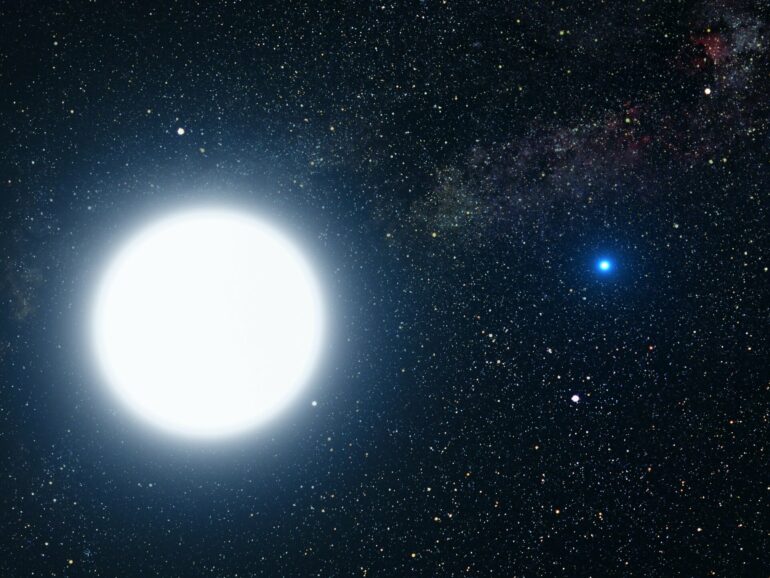Ph.D. candidate Cui Yingzhen and Prof. Meng Xiangcun from the Yunnan Observatories of the Chinese Academy of Sciences recently investigated the viability of the optically thick wind (OTW) model in accreting white dwarfs (WDs). They found that the accreted material can effectively prevent the occurrence of OTW on the surface of WDs, which may change the understanding of the single degenerate model of Type Ia supernovae (SNe Ia).
Results were published in Monthly Notices of the Royal Astronomical Society.
Accreting WD systems, which usually consist of a WD and a non-degenerate companion, are important for studying binary physics and accretion physics. WDs can gain masses by accretion, and if their masses eventually reach the Chandrasekhar mass limit, an SNe Ia explosion may occur. Therefore, the study of such systems can well constrain the formation and evolution of SNe Ia.
According to the researchers, during the evolution of an accreting WD to an SN Ia, if the accretion rate exceeds the maximum WD burning rate (critical accretion rate), the excess material will expand to form a common envelope and no SN Ia will occur. Therefore, the birth rate of SNe Ia predicted by the accreting WD model is too low compared with the observed value.
To overcome this difficulty, they proposed an OTW model, in which an OTW was generated at the surface of the WD to blow away the excess material when the mass transfer rate exceeded the critical accretion rate. Thus, this OTW model was considered to be the physical basis for the accreting WDs to explode as SNe Ia by accretion.
However, observations of SN Ia remnants in the last decade have not revealed evidence of the interaction between the OTW and the circumstance material, nor have they found the counterpart predicted by the OTW model. This implies that no OTW may have occurred in the progenitor of SNe Ia. For this reason, the researchers have reconsidered the condition for the occurrence of OTW and suggested that the interaction between the accreted material and the wind could prevent the formation of OTW.
It was found that the viability of OTW strongly depended on the accretion rate. In the case that the accretion rate exceeds the critical accretion rate, the accreted material can effectively prevent the occurrence of OTW. These results explain the contradiction between models and observations of the OTW model, and also raises new questions related to the progenitor of SNe Ia.
More information:
Yingzhen Cui et al, The viability of the optically thick wind model in accreting WDs at high accretion rates, Monthly Notices of the Royal Astronomical Society (2022). DOI: 10.1093/mnras/stac1966
Provided by
Chinese Academy of Sciences
Citation:
Researchers investigate viability of optically thick wind model (2022, August 3)



